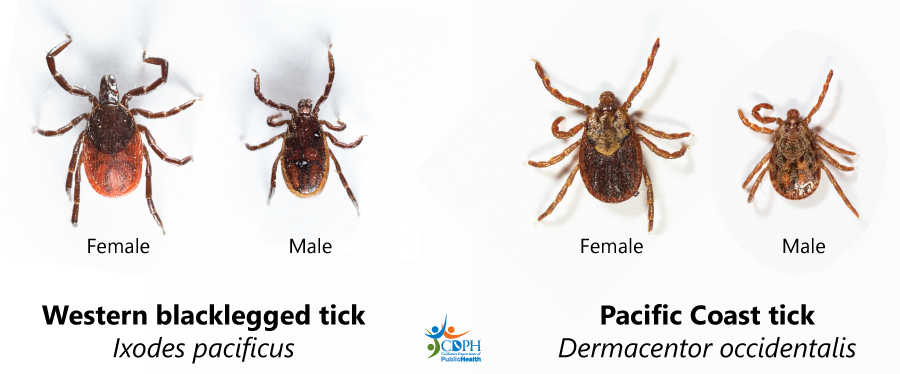While you are outside
-
Check for ticks 
-
When: Check yourself and others for ticks regularly while you are walking, hiking, or spending time outside, especially after brushing against tall grass and sitting on rocks, logs, and wooden picnic benches.
-
Where: On your clothes and body
-
Ticks can be hiding in hard-to-see areas like your back, behind your knees, under your arms, and in your hair.
-
Ask for help checking the areas you can't easily see or reach, and help others check for ticks, too.
-
Remove ticks: If you find a tick crawling on your clothes or skin, brush it off. If you find a tick attached to your skin,
remove it right away.
What to look for: Ticks have a flat, teardrop-shaped body and are usually brown, reddish, or black, and may have gray or white markings. Ticks can be tiny, so look carefully, or ask someone to help you check the areas you can't easily see.

After you return indoors
-
Check for ticks
again (including on pets)
-
After coming inside, check your whole body for ticks, including behind the knees, under the arms, and in the hairline, belt line, and groin areas. Use a mirror or have a family member help check the areas on your body that you can't easily see. If you find a tick attached to your skin,
remove it right away.
-
It's important to check pets and gear for ticks as well, since ticks can ride into your living space on pets, backpacks, and coats and then attach to a person later.
-
Parents should carefully examine their children.
-
Continue to check for ticks on your body and in your bedding for 3 days after being outside in areas with ticks.
-
Dry clothes (if you have access to a clothes dryer)
-
Without washing, put the clothes you were wearing while outside in a hot dryer for 10 minutes to kill any ticks that may be on your clothes. If your clothes are wet from being outside, put them in for 20 minutes. Then wash and dry the clothes as usual if needed. Heat will kill any ticks.
-
Shower
Learn more about preventing tick bites on people
It's important to prevent ticks on your pets because pets can carry ticks into the home that can bite a person later. Tick bites can also make pets sick.
-
Check your pets for ticks daily, especially after they spend time outdoors.
-
Treat pets with a tick preventive product to keep them from bringing ticks into the home.
- Treat dogs and cats for ticks only as recommended by a veterinarian.
Learn more about preventing ticks on pets